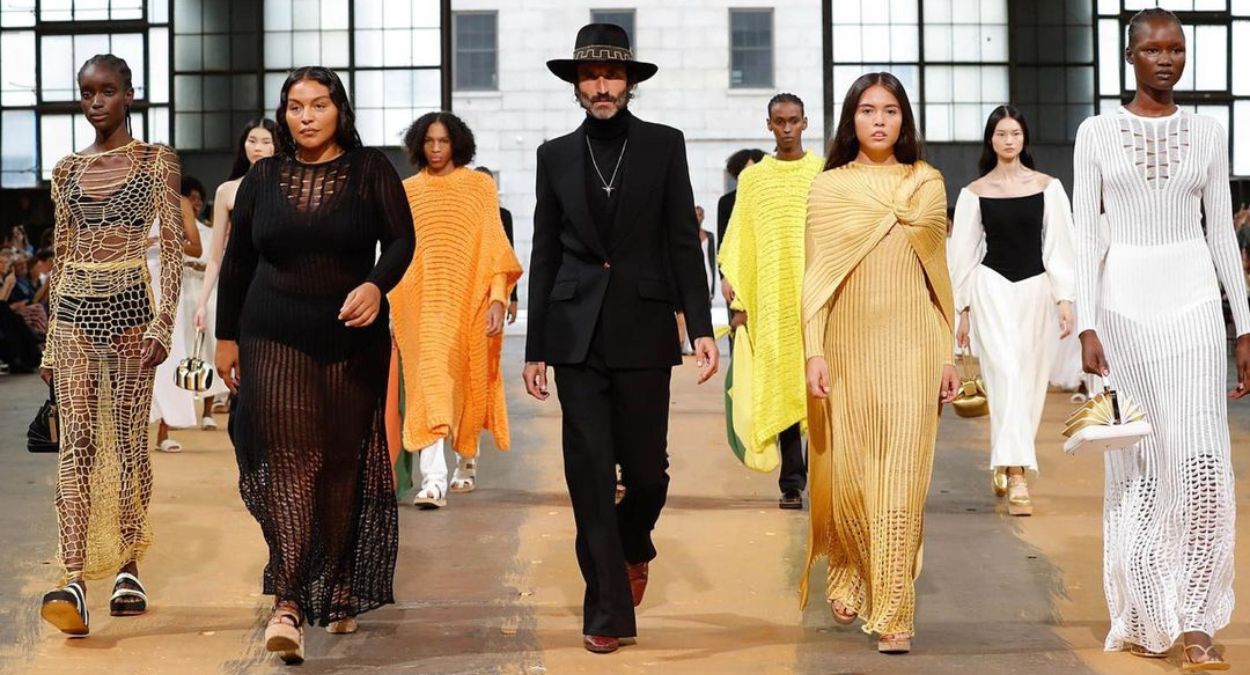
Stats about fashion's global impact are wrong—here's why
Misinformation and fake news are undermining fashion’s sustainability progress


The fashion industry is the second biggest polluter in the world after oil. It’s also responsible for 20 per cent of water pollution. On that note, did you know that producing one T-shirt uses 20,000 litres of water? All these statistics have one thing in common—they're false. The fashion industry has been reciting outdated statistics, wild generalisations, and unfounded claims like these for years. Whatever you call it—misinformation, fake news or Zombie data—the truth is that they’re undermining fashion’s sustainability progress.
“Bad data has real-world ramifications,” says George Harding-Rolls, campaign manager at Changing Markets Foundation, a group that exposes irresponsible corporate practices regarding sustainability. You can tell a statistic is false, he explains, if “there is no reference, it’s lost in translation, has been deleted off the internet, or no one can access the methodology behind it.”
Fashion is unique because it intersects with so many other industries, including agriculture (for leather, cotton, viscose, wool, and more) and big oil (for materials including polyester, PVC, polyurethane). That’s not to mention the chemicals, transport, retail, returns, textile recycling and the second-hand clothing market, all of which can take a garment around the world and back again in its lifetime.
“Unlike any other industry, fashion is integrated into the global economy,” says Harding-Rolls. “So trying to find accurate data on any single one of those things is difficult.” Given the lack of transparency over even the most basic information, it’s impossible to package fashion’s impact into a neat statistic.
A lack of research is partly to blame. “It’s not an industry where there is a strong scientific community interested in studying it,” says Alden Wicker, sustainable fashion journalist and founder of EcoCult, who has debunked a number of dodgy facts throughout her career. “There should be more grants going to people who want to study this and more university programmes that allow people to study textile chemistry in a way that doesn’t shunt them into working for brands.”
Undeniably, the fashion media also plays a role in perpetuating false facts. “Do I wish that fashion journalists had a deeper education in some of these topics? Yeah, I do. But I imagine that somebody who wants to write about fashion probably doesn't have an organic chemistry degree—I don’t,” says Wicker. “Fashion journalism is run on the fumes of young people who aren't paid enough for the time that it takes to do this kind of legwork.” Fact-checkers, she says, are increasingly rare yet crucial to stopping misinformation at the source.
When research is done, it’s often published or funded by brands, making the findings inherently biased. “If this is where all the funding comes from, you have to question it,” says Nusa Urbancic, campaigns director at Changing Markets Foundation. “It would make sense to have more independent funding for academia that could understand the impacts of the fashion industry.”
But if these punchy (albeit inaccurate) statistics highlight the scale of fashion’s impact and inspire change, surely that’s a good thing, right? “There has been a lot of discussion about how the “second most polluting industry” stat galvanised action so maybe it was okay, but it didn't,” says Wicker. “It galvanised promises and greenwashing. It was an amorphous figure that nobody has responsibility for because it’s super unspecific, it’s not traced back to any measurement, and it allowed the industry to make these similarly vague, unmeasurable climate promises that they’re not going to reach.”
Brands could be using outdated or inaccurate data (or lack thereof) to make sourcing decisions, meaning they could be actually increasing their impact, manipulating data to fit their agenda, or delaying their sustainability commitments altogether. “Everyone is treading water saying that we need better data, meanwhile, the wider conversations about fossil fuel reliance and overproduction are conveniently avoided until some future date,” says Harding-Rolls. “We shouldn’t be waiting to get the perfect data because the environmental crisis is really urgent,” agrees Urbancic.
So what’s the solution? “Legislation would really change the situation,” says Urbancic. “Basic information is difficult to dig out, but once we have mandatory legislation, this will change.” The New York Fashion Act is one potentially game-changing piece of legislation. “It could do a lot of good because it’s using the government to compel brands to report on what is going on in their own supply chain,” says Wicker. “Watchdogs can use this to create data that journalists can use to hold brands accountable to the public.”
In the media, Wicker wants to see more science, climate, and health journalists take an interest in fashion. “It’s a super fun thing to write about, I don’t think science nerds understand how juicy a topic fashion is,” she says. “There is a lot to get into, and that’s why I love it.”
This piece originally appeared in Harper's Bazaar UK









